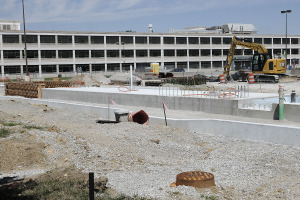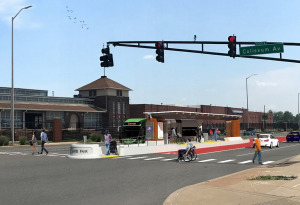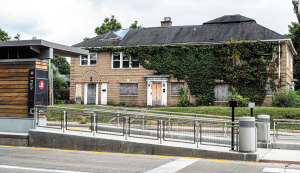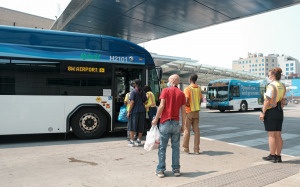
$188 million Purple Line moving toward 2024 completion
But there’s still a lot of work to do. Building of passenger stations has yet to begin; all progress so far has laid the groundwork for future construction.

But there’s still a lot of work to do. Building of passenger stations has yet to begin; all progress so far has laid the groundwork for future construction.
New York City-based Via Transportation Inc., which last year pulled out of the ride-hailing industry to focus on public transportation services, will lead the program.
The Centers for Disease Control and Prevention is set to extend the order, which was to expire on April 18, to monitor for any observable increase in severe virus outcomes as cases rise in parts of the country, according to a person familiar with the matter.
Indianapolis officials are looking to state government for options that could help the city close a funding gap of up to $1 billion a year for roads and transportation infrastructure.
The mask mandate was scheduled to expire March 18, but the Transportation Security Administration said Thursday that it will extend the requirement through April 18.

Agencies are expected to use the money to prop up day-to-day operations, including staffing and payroll as well as cleaning and sanitization to limit the spread of illness in public transportation.

Nearly 70% of the total cost is set aside for infrastructure improvements, including sidewalks and stormwater drainage.

The House Ways and Means Committee on Monday tabled an amendment that would have conditioned the removal of some public transportation funding requirements on compliance with new lane minimums—which would’ve involved budget-busting redesign and land acquisition over several miles of the proposed 24-mile route.

Construction on the $188 million Purple Line is expected to begin in early 2022. The route will extend from downtown Indianapolis to Lawrence.

As Biden prepares to sign the infrastructure bill on Monday, eyes are turning to the man still best known as “Mayor Pete,” a newcomer whose promise of “generational change” and real-world sensibility of fixing potholes launched him to the top of the early Democratic primary contests during the 2020 campaign.

IndyGo announced in September that it would cut bus frequencies on 15 routes, effective Oct. 10, in a decision driven by its workforce and ridership numbers.

The nine planned projects stretch across the city. Each connects to existing and planned trails, bike-friendly streets, bus rapid transit lines and city landmarks.
The ordinance is increasingly relevant with construction on the second of three rapid-transit bus lines starting as soon as February, thanks to an $81 million federal transportation grant IndyGo landed last week.
The Purple Line will run along 38th Street, upgrading a traditional bus route that IndyGo says is among its most ridden and most profitable, and connecting downtown Indianapolis to Lawrence.

Earlier this month, the Democrat-controlled City-County Council voted 20-5 for new development standards that add residential and mixed-use districts to push bus usage, walkability and density county-wide.

When IndyGo’s goal of an all-electric bus fleet by 2035 hit a major obstacle, the agency detoured, ordering 27 hybrid buses that are powered with both electricity and diesel.
Money for highways, public transit, broadband and more are included in the U.S. Senate’s current version of the Infrastructure Investment and Jobs Act, which could come to a vote as early as this weekend.
As discussions continued through the weekend, Ohio Sen. Rob Portman said both sides were “about 90% of the way there” on an agreement.
A Republican senator won initial approval this week for an amendment that would require IndyGo to pay public utilities to relocate utility services to make way for new transit lines, a move that Democrats say goes against standard practice.
Jennifer Beck, a senior project manager for INDOT, appeared before the Westfield City Council to alleviate fears that an estimated $15 million project expanding State Road 32 from two lanes to four would cost the city far more than expected.